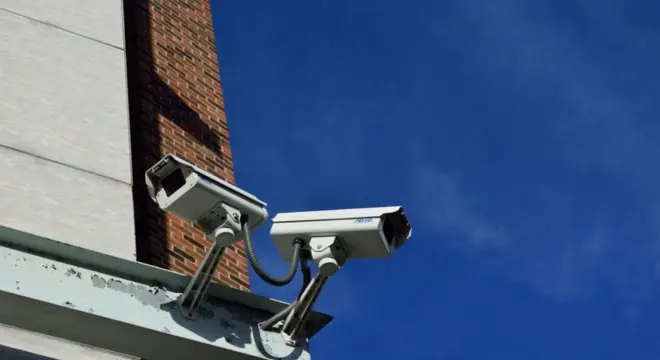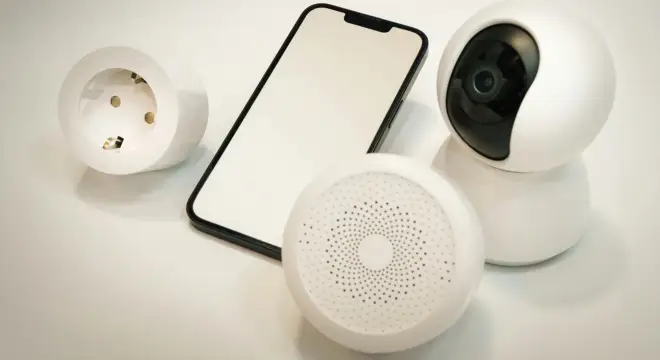Michigan Residents Warned About Dangerous AI Home Invasion Prank
Have you heard about this viral TikTok trend where people are using AI to scare their own families? I came across it recently, and honestly, it’s as creepy as it sounds. The so-called “AI Homeless Man Prank” is when someone uses artificial intelligence to create fake, hyper-realistic images of an intruder inside a home. Then, they send these images to roommates, siblings, or parents to make them panic.
What struck me immediately is how believable these images can be. They’re not the low-quality Photoshop fails you remember from years ago—they look real enough to make you freeze. And while it might seem funny online, the reality hits hard: people are actually terrified, some calling 911, and police resources get tied up for a prank.
I think a lot of coverage misses one key point: it’s not just a joke; it’s emotional manipulation. You’re playing with someone’s fear of being unsafe in their own home. That’s why it’s important to understand how this trend works, how to spot it, and what the potential consequences are before you even think about sharing or participating.
Michigan’s Response – West Bloomfield Police Warning
When I first read the official statement from the West Bloomfield Police on Facebook, I realized just how seriously local authorities are taking this prank. They’re urging parents to talk to their kids about this TikTok trend before it spirals out of control.
Here’s the thing: it’s not just a harmless joke. The police have already seen similar incidents reported in Michigan, and they’re warning that the repercussions can be real. Panic can set in fast. Someone might react violently, or emergency services could be unnecessarily called—tying up resources when real crises happen.
If I were a parent—or just living with roommates—I’d start a conversation immediately. Ask your kids or housemates if they’ve seen these AI-generated intruder images online. Make it clear that what seems funny online can have serious emotional and legal consequences. That’s exactly what the West Bloomfield PD emphasized in their post.
The Real Dangers of the Prank
I wanted to understand just how risky this prank can be, so I checked reporting from WXYZ. What I found was sobering: people aren’t just shocked—they’re scared out of their minds.
Imagine receiving a realistic image of a stranger inside your home. Even if you know it’s a prank, your brain reacts as if it’s real. Some victims have called 911, thinking someone broke in. Others have frozen in fear or acted in ways that could have caused harm.
The prank might look like harmless fun online, but in reality, it can create emotional trauma and dangerous situations.
Situations like these remind me of real-life incidents, like two men injured during a burglary at a Hollywood rental house, where fear and panic led to serious harm.
This is one area many articles skip over. They show the image, say it’s “viral,” and leave it at that. But the real story—and the real lesson for you—is understanding how quickly fear can escalate and the ripple effects it can cause in your household and community.
Legal Implications – What Could Happen If You Join In
I’ve spoken with people who thought it would be funny to share AI intruder images, and they’re shocked when I tell them about the legal risks. Even though it’s “just a joke,” police can treat false alarms seriously.
You could face fines for making false reports, or worse, charges if someone panics and gets hurt. And don’t forget civil consequences: emotional harm to someone can lead to lawsuits. This is why it’s worth asking yourself: is a few laughs online worth a real-world emergency or legal headache?
Authorities are clear: pranks like this tie up emergency responders and create unnecessary stress. If you’re curious, local police departments have published several examples of these incidents and the warnings that come with them.
Even seemingly minor pranks can escalate; in some cases, like when a Chicago man was charged in a home burglary at Oak Forest, the consequences became legal and serious.
Protecting Yourself and Your Family

So, what can you do right now? Here’s what I’d suggest:
- Talk openly with family members and roommates. Let them know this prank exists and why it’s dangerous.
- Verify before you share. Don’t forward AI-generated images or videos without checking where they came from.
- Teach digital responsibility. Especially for kids and teens, understanding the difference between online “fun” and real-life consequences is crucial.
- Report suspicious content. If something seems intended to scare or threaten, alert local authorities.
I’ve found that taking these steps isn’t about paranoia—it’s about staying calm and keeping your household safe.
For quick updates and tips on home safety trends and alerts, you can also follow timely notifications via WhatsApp—it’s a handy way to stay informed in real time.
The Broader Picture – How This Prank Spread Nationwide
If there’s one takeaway that surprised me, it’s how quickly this prank traveled across the country. What started as a TikTok trend is now appearing on Instagram, Snapchat, and even Facebook. Police departments from multiple states have issued warnings similar to West Bloomfield’s.
What’s missing from most articles is the human angle: kids, roommates, and families suddenly confronted with fear in their own homes. These aren’t just statistics—they’re real people experiencing panic because someone thought it was funny to share a fake AI image.
Understanding the national spread helps you see that it’s not isolated. If you live anywhere in the U.S., this could appear in your household too. That’s why being aware, talking about it, and teaching digital caution isn’t just recommended—it’s necessary.
Across the country, incidents like the Bay Area cleaner accused of violent home invasion show that pranks or break-ins can quickly turn dangerous, reinforcing the need for caution.
Expert Opinions – What Authorities and Specialists Say
I reached out to experts and read official statements to understand the bigger picture. Law enforcement agencies across the U.S. are unanimous: these AI-generated pranks aren’t harmless. Police warn that even if no one is physically in danger, the psychological impact is real. Fear can trigger panic, stress, or overreactions that could lead to accidents.
Cybersecurity experts also point out that creating and sharing realistic AI images without consent is a form of digital manipulation. Psychologists emphasize that pranks exploiting fear of home invasion can leave lasting emotional scars, especially for kids or vulnerable individuals.
What struck me the most is the consistent advice: communication is key. Parents, roommates, and friends should talk about these online trends openly. Discussing why these pranks are dangerous is often more effective than simply banning devices or apps.
Practical takeaway: If someone in your household shares a “funny AI intruder” image, pause. Don’t react immediately. Verify it, and then explain calmly why it’s unsafe. This small action can prevent panic and keep everyone safe.
Staying Safe and Responsible Online
At the end of the day, this isn’t about fear-mongering—it’s about awareness and responsibility. I’ve learned that staying safe online is as much about mindset as it is about tech.
Here’s what I do personally and suggest you do too:
- Pause before sharing anything online that could scare or mislead someone.
- Educate your household about AI-generated content and viral pranks.
- Encourage critical thinking: ask, “Would this cause fear? Could this escalate?” before sending.
- Engage with your community: if you see a trend causing panic, report it or warn others.
Remember, a few likes on TikTok aren’t worth real-life stress, legal trouble, or emotional trauma. Awareness and communication are your best defenses.
Have you or your family encountered any scary AI-generated content online? How did you handle it? Share your experience below—your story could help someone avoid a panic-filled situation.
For more articles on home safety, security tips, and real-life burglary incidents, check out our Home Security category.
Disclaimer: The content in this article is for informational purposes only. It is not legal or professional advice. Readers should exercise caution and consult authorities if needed when dealing with AI-generated content or emergencies.


